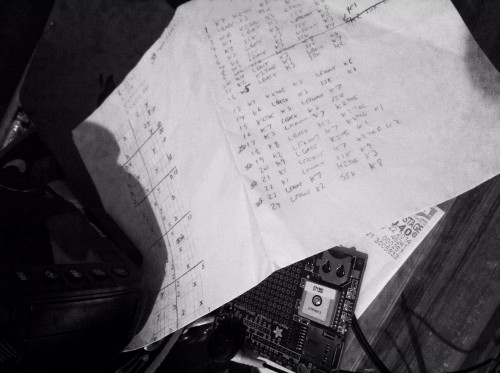Download the pattern: Faux Cable Hat
The standard technique for moving a column of stitches across a pattern is cabling, in which one or more stitches are passed over one or more other stitches while knitting a row. However, a column of stitches can also be moved across a pattern by balancing increases on one side of the column with decreases on the other side of the column. As an exercise in this technique, I started drawing up a chart with two such columns, criss-crossing is opposite directions.

I ended up with what I call my Faux Cable Hat. It’s a subtle pattern — without the bulk of real, honest-to-goodness cables — that looks best in a single color yarn.

Also, it can be knit with either a foldable brim, or a short, simple brim.
One note about the increases: All increases have either a “left” or “right” lean, specified as M1L and M1R, respectively. M1L is made by lifting the bar between the current two stitches from the front, and knitting through the back loop. M1R is made by lifting the bar between the current two stitches from the back, and knitting through the front loop. Further information about these two techniques can be found at,
I occasionally become bleary-eyed, and forget which type on increase requires lifting the bar from which side. Eventually, I came up with the mnemonic that M1L lifts the bar from the Front, because L and F are similar (both letters are constructed with only horizontal and vertical lines). Likewise, M1R lifts the bar from the Back, because R and B are similar (both letters are constructed with a rounded shapes).
Download the pattern: Faux Cable Hat



 Home
Home